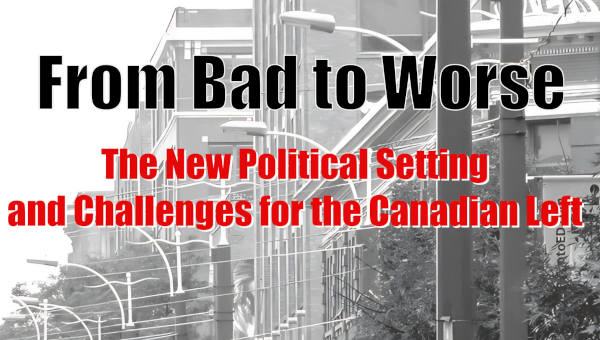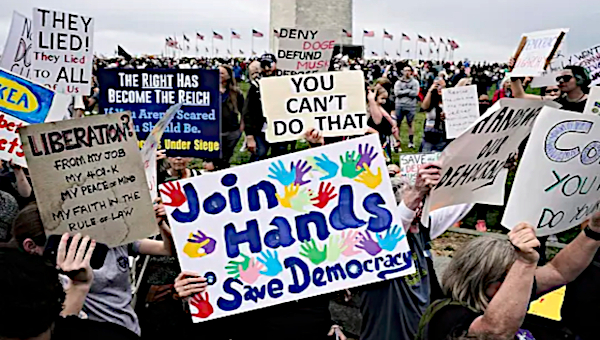From Global Finance to the Nationalization of the Banks
Eight Theses on the Economic Crisis
1. The current economic crisis has to be understood in terms of the historical dynamics and contradictions of capitalist finance in the second half of the 20th century.
Even though the spheres of capitalist finance and production are obviously intertwined (in significant ways today more than ever before), the origins of today’s US-based financial crisis are not rooted in a profitability crisis in the sphere of production, as was the case with the crisis of the 1970s, nor in the global trade imbalances that have emerged since. Although the growing significance of finance in the major capitalist economies was already strongly registered by the 1960s, it was the role finance played in resolving the economic crisis of the 1970s that explains the central place it came to occupy in the making of global capitalism. The inflation that was the main symptom of that crisis had a strong negative impact on those holding financial assets and destabilized the international role of the dollar. Under the guidance of the US Federal Reserve, financial markets used very high interest rates to drive up unemployment, defeat trade union militancy and restrict public welfare expenditures in the early 1980s – all of which had come to be seen as the source of the intractable profitability and inflation problems of the previous decade. Yet it was precisely the contradictory ways finance contributed to global capitalism’s successes in the closing decades of the 20th century that laid the foundation for the massive capitalist crisis that now closes the first decade of the 21st century.
2. The spatial expansion and social deepening of capitalism in the last quarter century could not have occurred without innovations in finance. The development of securitized financial markets and the internationalization of American finance allowed for the hedging and spreading of the risks associated with the global integration of investment, production and trade. This provided risk insurance in a complex global economy without which capital accumulation would otherwise have been significantly restricted. At the same time, finance penetrated more and more deeply into society, integrating subordinate classes as debtors, savers, and even investors through private pensions, consumer credit and mortgages for private housing. This became especially important in facilitating the maintenance of consumer demand in a period of wage stagnation and growing inequality. In terms of directly fostering capital accumulation, finance was not only an important site of technological innovation in computerization and information systems, but also facilitated innovation more generally in high tech sectors through venture capital, especially in the US. The central role of the US dollar and Treasury bonds in the global economy as the key store of value and the basis for all other calculations of value, alongside the global institutional predominance of US financial institutions, acted as a vortex for drawing the global surplus to American financial markets and instruments. This allowed for the mobilization of cheap global credit for the US economy, and sustained its place as the major import and consumer market in the global economy. The lowering of US interest rates was important to the macroeconomic stability reflected in the fewer and milder recessions within the US in comparison with the post-war era (‘The Great Moderation,’ as economists refer to the 1983-2007 period).
3. The competitive volatility of global finance produced a series of financial crises whose containment required repeated state intervention. Global financial competition for higher yields led to institutional and market innovations that allowed greater leveraging and therefore more credit relative to the capital base. This in fact amounted to a vast increase in the effective money supply, but rather than yielding the price inflation that monetarists predicted, the defeat of labour and the increased corporate ability to fund investments with internal funds meant that increased liquidity translated into asset inflation. This asset inflation was uneven across sectors, producing financial bubbles from stock markets to real estate at various times, while the size of these bubbles was expanded by virtue of the material expansions in the real economy related to each of these areas. The bursting of these bubbles became a common feature of capitalism and the state interventions required to contain them reinforced the confidence that supported future bubbles. The alleged withdrawal of states from markets amidst the globalization of capitalism was a neoliberal ideological illusion: states in the developed capitalist countries pumped more liquidity into the banks in the face of financial crises, while they ensuring that crises in the developing countries were generally used to impose financial discipline. The neoliberal American state played the most active role as the imperial guarantor, coordinator and fire-fighter-in-chief for global capitalism.
4. Both finance’s central role in the making of global capitalism and the American state’s role in sustaining it produced the bubble that emerged inside the US housing sector. Rising demand for home ownership at all income levels, partly reflecting limits on public housing since the crisis of the 1970s, was encouraged by US government support for meeting housing needs through financial markets backed by mortgage tax deductions. And, reflecting the increasingly unequal income distribution that was the consequence of the defeat of labour generally and the restructuring of production and employment, a broad stratum of the working class population also sustained their consumption through taking out second mortgages on the bubble-inflated values of their homes, But all this was really only made possible by the acceleration of financial securitization and the creation of a broader market for mortgage-backed securities in particular. This developed amidst rising house prices that apparently increased the wealth and credit-worthiness of those borrowing, and gave rise to the acceptance of lower standards (including for ‘teaser’ subprime mortgage rates) by regulatory agencies, largely supported by both parties in Congress. The Federal Reserve’s low interest rate policies, especially in the wake of the bursting of the dot-com bubble, reinforced by the high demand for US Treasury securities as the safest store of value in a highly volatile global financial system, intensified competitive pressures on finance everywhere to get higher yields through greater leveraging of assets and innovative securitization to stretch the boundaries of risk. The historical safety of collateralized home loans (with such a large portion having been backed by the US government) reinforced the confidence in perpetually rising home prices and made housing debt the most attractive arena for the systemic exercise of arbitrage between low-interest US Treasury bonds and high-interest mortgage-backed securities.
5. The inevitable bursting of the housing bubble had such a profound impact because of its centrality to sustaining both US consumer demand and global financial markets. The eventual bursting of the housing bubble was inevitable once, as was the case by 2005, housing prices peaked. By this time, not only had the Fed’s low interest rate policy come to an end, but teaser rates on many subprimes had run out. The rise in foreclosures and the number of houses offered for resale had immediate effects on housing prices, new home construction and furniture and appliance sales. Moreover, by virtue of the loss in value of the primary asset figuring in workers’ perceptions of their personal wealth, this in turn led to an overall decline in US consumer spending and import demand in a way that the bursting of stock market bubbles had not. At the same time, since the spreading of risk in subprime mortgages had been effected through their packaging into derivative securities with more highly-rated tranches of debts, the housing crisis undermined the econometric equations that valued these assets in global financial markets. Mortgage-backed securities became difficult to value and to sell, and this produced a contagion throughout financial and inter-bank markets that spread the collapse internationally. Taken together with the impact of the housing crisis on mass consumption behaviour, and thus on the US economy’s ability to function as the key global consumer, illusions that other regions might be able decouple from the US in this crisis were quickly dispelled.
6. The crisis reinforced the centrality of the American state in the global capitalist economy while multiplying the difficulties entailed in managing it. The rise of the US dollar in currency markets and the enormous demand for US Treasury bonds as the crisis unfolded reflected the extent to which the world remained on the dollar standard and the American state continued to be regarded as the ultimate guarantor of value. Treasury bonds are in demand because they remain the most stable store of value in a highly volatile capitalist world: illusions that foreign states were previously doing the US a favour by buying Treasury securities may finally be dispelled by this crisis. The American state’s central role in terms of global crisis management – from currency swaps to provide other states with much needed dollars to overseeing policy cooperation among central banks and finance ministries – has also been confirmed in this crisis. Yet despite its very active interventions, the American state has proved unable to contain the effects of this particular crisis. The massive drops of liquidity that it has helicoptered onto the financial system since August 2007 have not restored the banks’ capacity or willingness to lend at anything like previous rates – even to each other, let alone to firms or to consumers. The whole system of securitized finance that has grown up over the past few decades – whereby the risk on mortgages, consumer credit and business loans is sliced, diced, repackaged and traded around the world – has imploded.
7. The scale of the crisis today is such that nationalization of the financial system cannot be kept off the political agenda. It is increasingly apparent, that monetary and fiscal stimulation alone are unlikely to succeed in ending the crisis since the banking system’s dysfunctionality today undermines the multiplier effect, just as new regulations are supposed to make finance more cautious and prudent in their lending. Indeed, there has been an increasing realization that it may not be possible to keep off the political agenda much longer the issue of bringing large portions of the financial system into public ownership. This is advanced today along the lines of the temporary nationalizations that took place in Sweden and Japan during their financial crises in the 1990s whereby the state took on the banks’ bad debts and then passed the banks back to the private sector. It is a measure of the severity of the crisis that nationalization is now being quite generally proposed even within the US although it poses a host of problems as a way of saving global capitalism. It is highly significant that the last time the nationalization of the banks was seriously raised, at least in the advanced capitalist countries, was in response to the 1970s crisis by those elements on the left who recognized that the only way to overcome the contradictions of the Keynesian welfare state in a positive manner was to take the financial system into public control. Now that bank nationalization is back on the political agenda (albeit now coming from very different sources), it is very important to contrast the type of band-aid nationalization now being canvassed with the demand for turning the whole banking system into a public utility, which would allow for the distribution of credit and capital to be undertaken in conformity with democratically established criteria. And it is necessary to point out that this would have to involve not only capital controls in relation to international finance but also controls over domestic investment, since the point of making finance into a public utility is to transform the uses to which it is now put.
8. The call for nationalization of the banks provides an opening for advancing broader strategies that begin to take up the need for systemic alternatives to capitalism. The severity of today’s economic crisis once again exposes the old irrationality of the basic logic of capitalist markets. As each firm (and indeed state agency) lays off workers and tries to pay less to those kept on, this has the effect of further undercutting overall demand in the economy. At the same time, the financial crisis exposes new irrationalities, not least those contained in the widespread proposals for trading in carbon credits as a solution to the climate crisis, which involve depending on volatile derivatives markets that are inherently open to the manipulation of accounts and to credit crashes. In the context of such readily visible irrationalities, a strong case can be made that – to save jobs and the communities that depend on them in a way that converts production to ecologically-sustainable priorities during the course of this crisis – we need to break with the logics of capitalist markets rather than use state institutions to reinforce them. We need to put on the public agenda the need to change our economic and political institutions so as to allow for democratic planning to collectively decide how and where we produce what we need to sustain our lives and our relationship to our environment. However deep the crisis, however confused and demoralized are capitalist elites both inside and outside the state, and however widespread the popular outrage against them, making this case will certainly require hard and committed work by a great many activists, many of whom will see the need for building new movements and parties to this end. This is what is really needed if this crisis is not to go to waste. •




